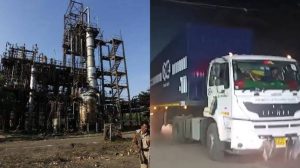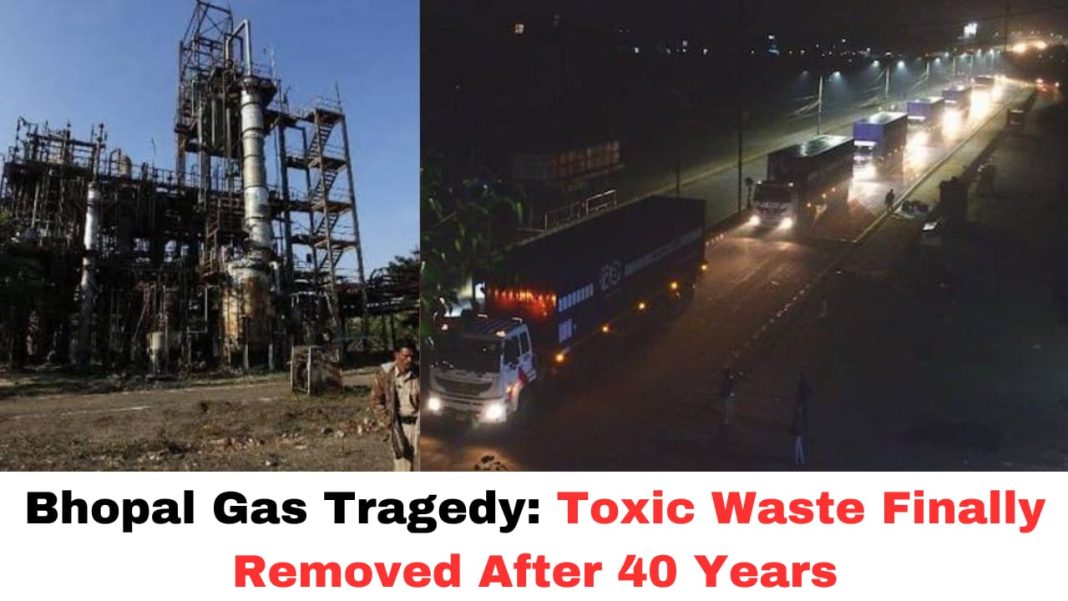Digital News Guru Madhya Pradesh Desk:
Bhopal Gas Tragedy
The Bhopal Gas Tragedy, one of the most catastrophic industrial disasters in history, has left a profound and lasting impact on the city of Bhopal, its residents, and the global community. It was on the night of December 2-3, 1984, that a deadly leak of methyl isocyanate (MIC) gas from the Union Carbide India Limited (UCIL) pesticide plant exposed hundreds of thousands of people to the toxic fumes. The immediate death toll is estimated to be between 3,000 and 10,000, but the true impact, in terms of long-term health complications, remains much higher, with over 25,000 deaths and hundreds of thousands suffering from health issues linked to the disaster.

Now, 40 years later, a significant step has been taken to address the aftermath of the disaster. The Indian authorities have begun the long-awaited removal of toxic waste from the site, a move hailed by some as a much-needed resolution and criticized by others for its perceived inadequacy. This cleanup operation has raised crucial questions about the environmental and health repercussions of the disaster that continue to affect Bhopal’s residents.
The Removal of Toxic Waste: A Long-Awaited Action
On January 2, 2025, a major milestone was achieved when the Indian government initiated the removal of toxic waste from the site of the Bhopal Gas Tragedy, some four decades after the disaster occurred. According to reports, approximately 337 metric tons of hazardous material were transported from the site to a disposal facility in Pithampur, about 230 kilometers away. The waste was loaded into twelve specially designed leak-proof containers, and the operation was carried out under heavy security to prevent any accidents or public protests.
This step follows a long and controversial history of attempts to clean up the site. The site itself has remained a toxic wasteland, contaminated by chemicals and waste products from the pesticide plant. In 2015, a small-scale trial incineration of just 10 metric tons of waste was conducted, and it was deemed successful. The current operation is expected to take several months, with the full disposal expected to be completed within nine months.

The incineration process aims to neutralize the toxic chemicals present in the waste in a manner that adheres to national environmental standards. This development is significant as the removal of the waste was an outstanding issue that had been ignored for years, leaving the environment and the surrounding community vulnerable to contamination.
The Legacy of the Bhopal Disaster
The Bhopal Gas Tragedy has always been a focal point for discussions on corporate accountability and environmental justice. While the Indian government reached a controversial settlement with Union Carbide in 1989, many survivors and activists believe that the compensation was inadequate and that the corporation should be held fully responsible for cleaning up the disaster site and compensating the victims.
Union Carbide, which was later acquired by Dow Chemical, has faced ongoing legal challenges regarding its responsibility for the disaster. In 1999, the Indian government filed a petition in the U.S. to seek further compensation and justice for the victims, but the case has yet to result in significant changes. While Union Carbide continues to maintain that it acted responsibly, the company has not taken full responsibility for the environmental damage that remains.
Environmental and Health Consequences
The environmental consequences of the Bhopal Gas Tragedy are still felt today. A generation later, the tragedy continues to haunt the people of Bhopal. Many residents live in close proximity to the disaster site, unaware of the toxic remnants buried beneath their homes and fields. The groundwater remains contaminated, and there have been reports of a variety of health issues, from cancers to neurological disorders, affecting the children born decades after the tragedy.
In addition, the health infrastructure in Bhopal remains inadequate to support the large number of people who suffer from the long-term effects of the gas leak and ongoing contamination. Survivors have expressed frustration over the government’s failure to address these health issues comprehensively.
Looking Ahead: The Need for Comprehensive Action
The removal of toxic waste from the Bhopal site is a step in the right direction, but it is only a small part of the broader problem. The real work of addressing the legacy of the Bhopal Gas Tragedy will require a comprehensive approach that includes not only cleaning up the site but also improving the health of the affected community, ensuring that the remaining toxic materials are safely disposed of, and holding multinational corporations accountable for their actions.

For many of Bhopal’s residents, the fight for justice continues. They demand full compensation, a more thorough cleanup, and recognition of the long-lasting effects of the disaster. As the incineration process continues, the international community, as well as local authorities, must ensure that future generations of Bhopal’s residents are protected from the toxic legacy of the tragedy.
In the end, the Bhopal Gas Tragedy will only be truly resolved when the survivors receive the justice they deserve, and the environment is fully restored, ensuring that such a disaster never happens again.
You May Also Read: Himachal Pradesh Renames Public Administration Institute in Honor of Dr. Manmohan Singh








